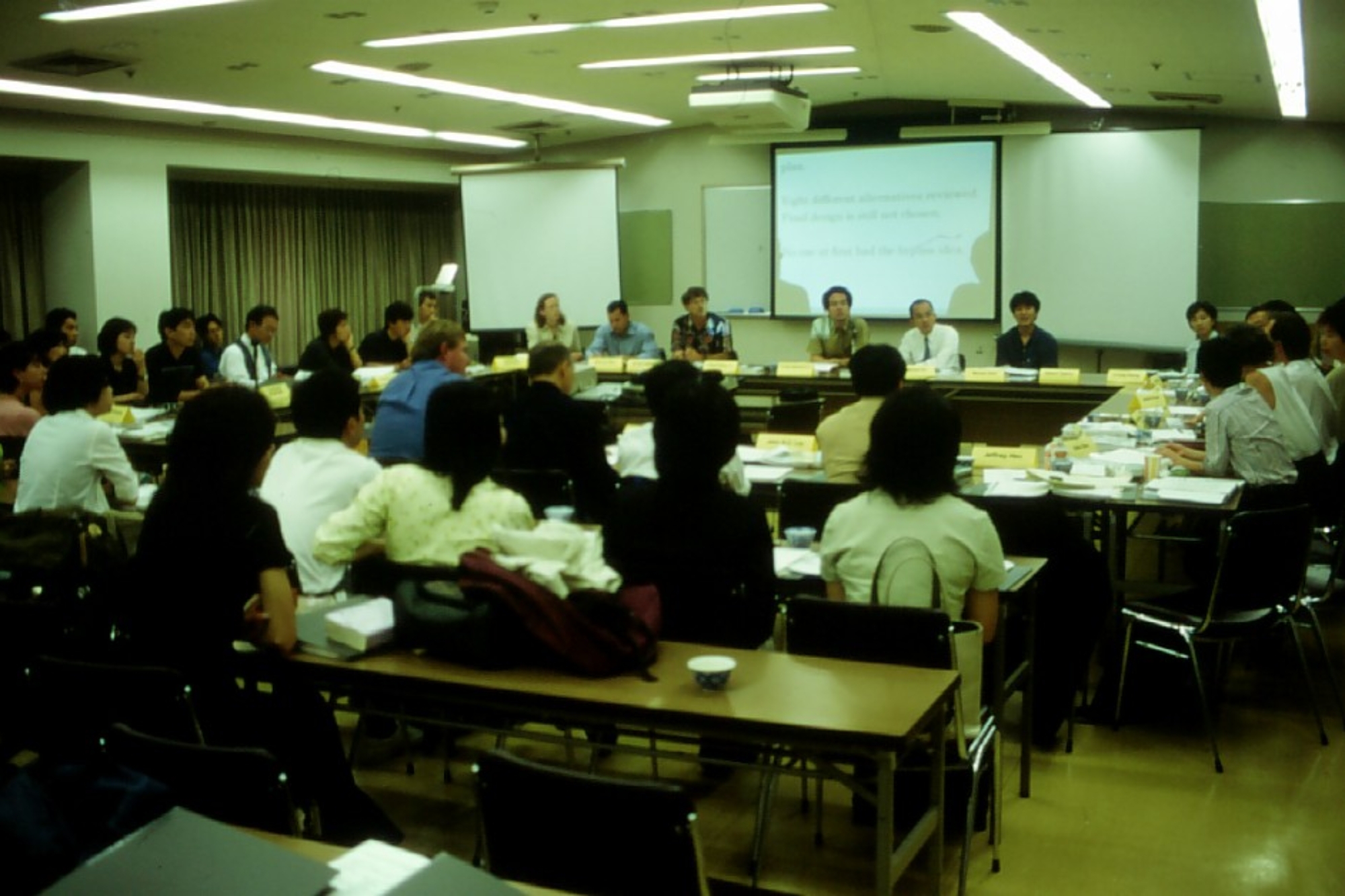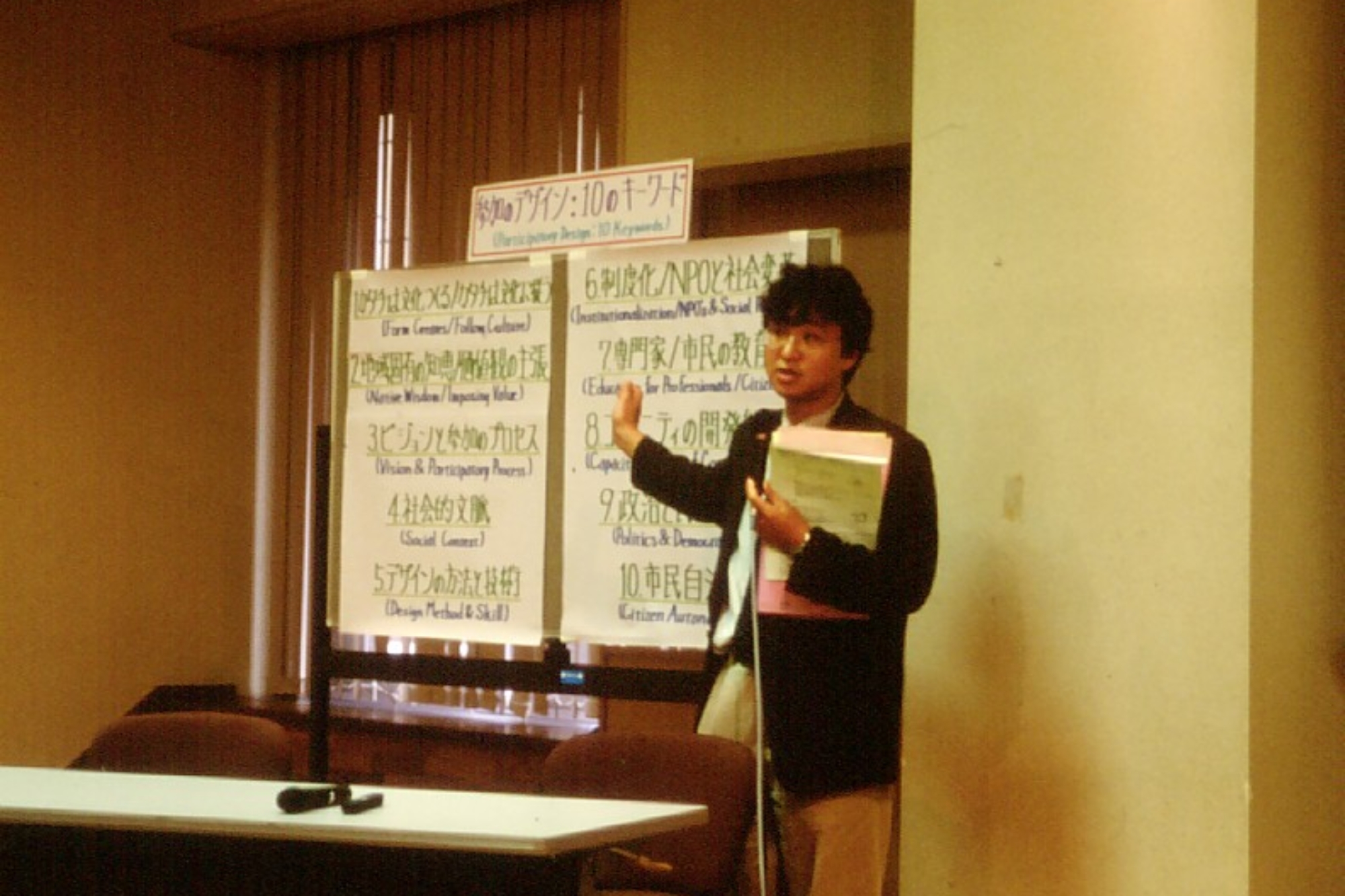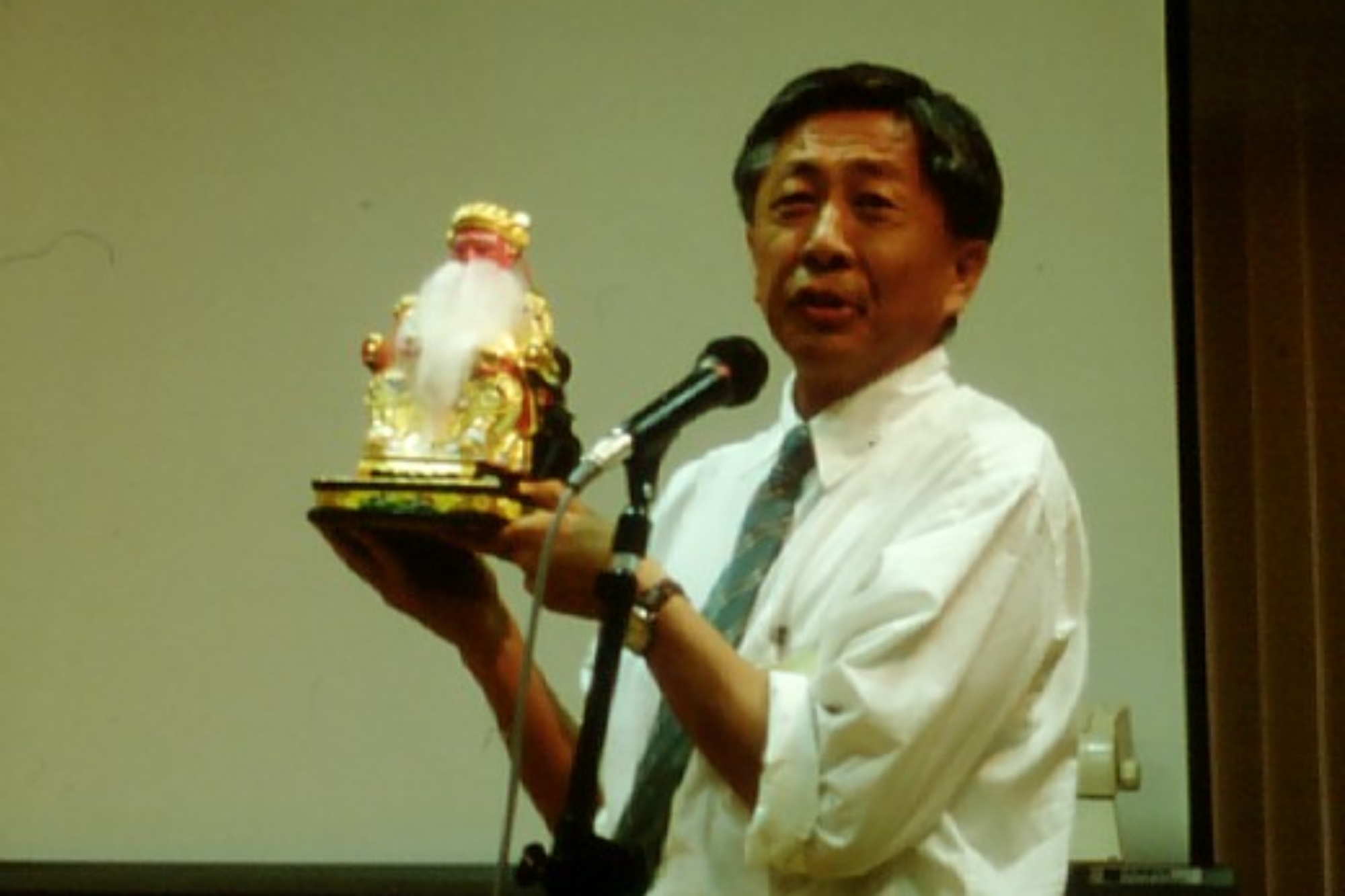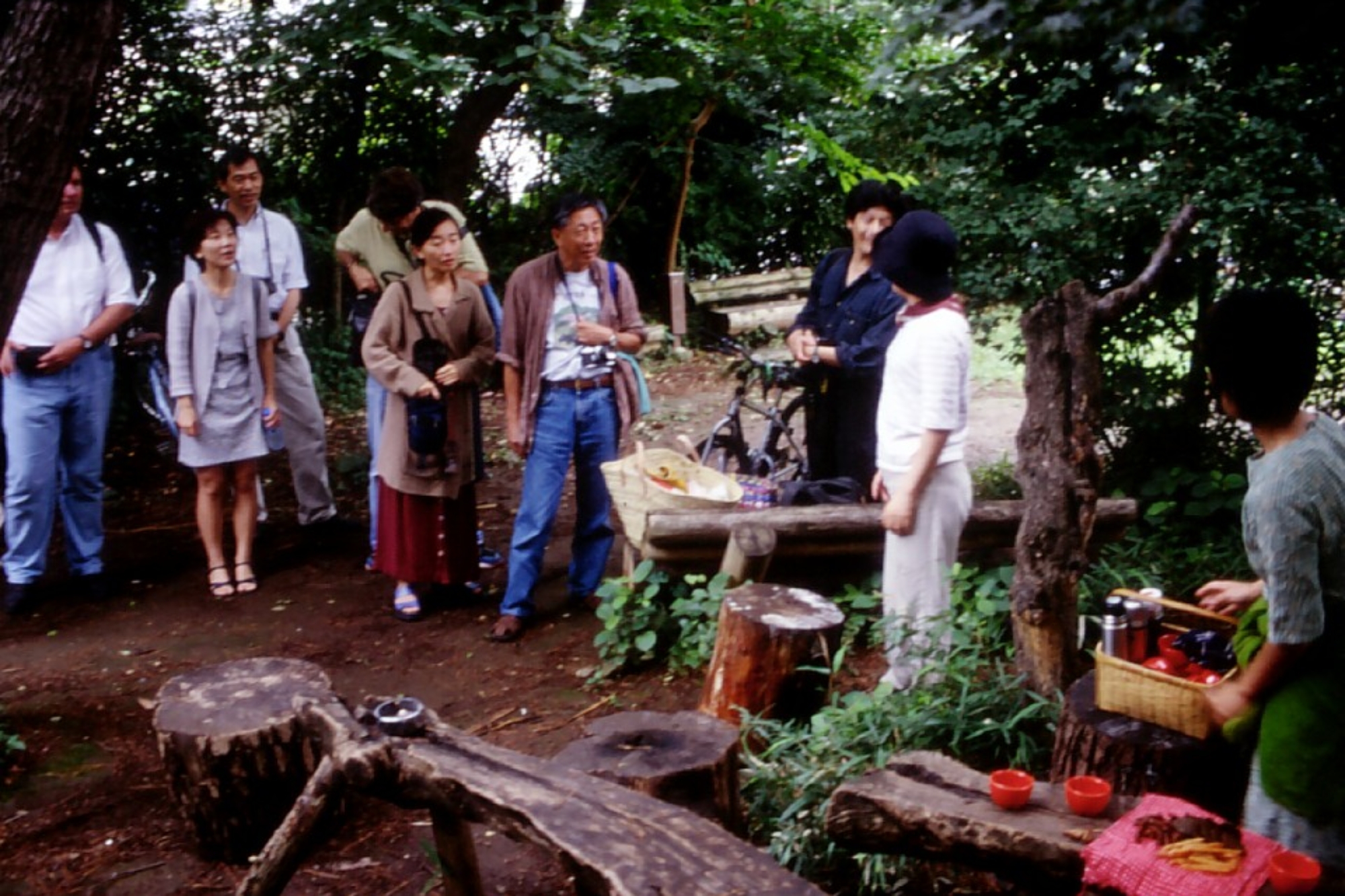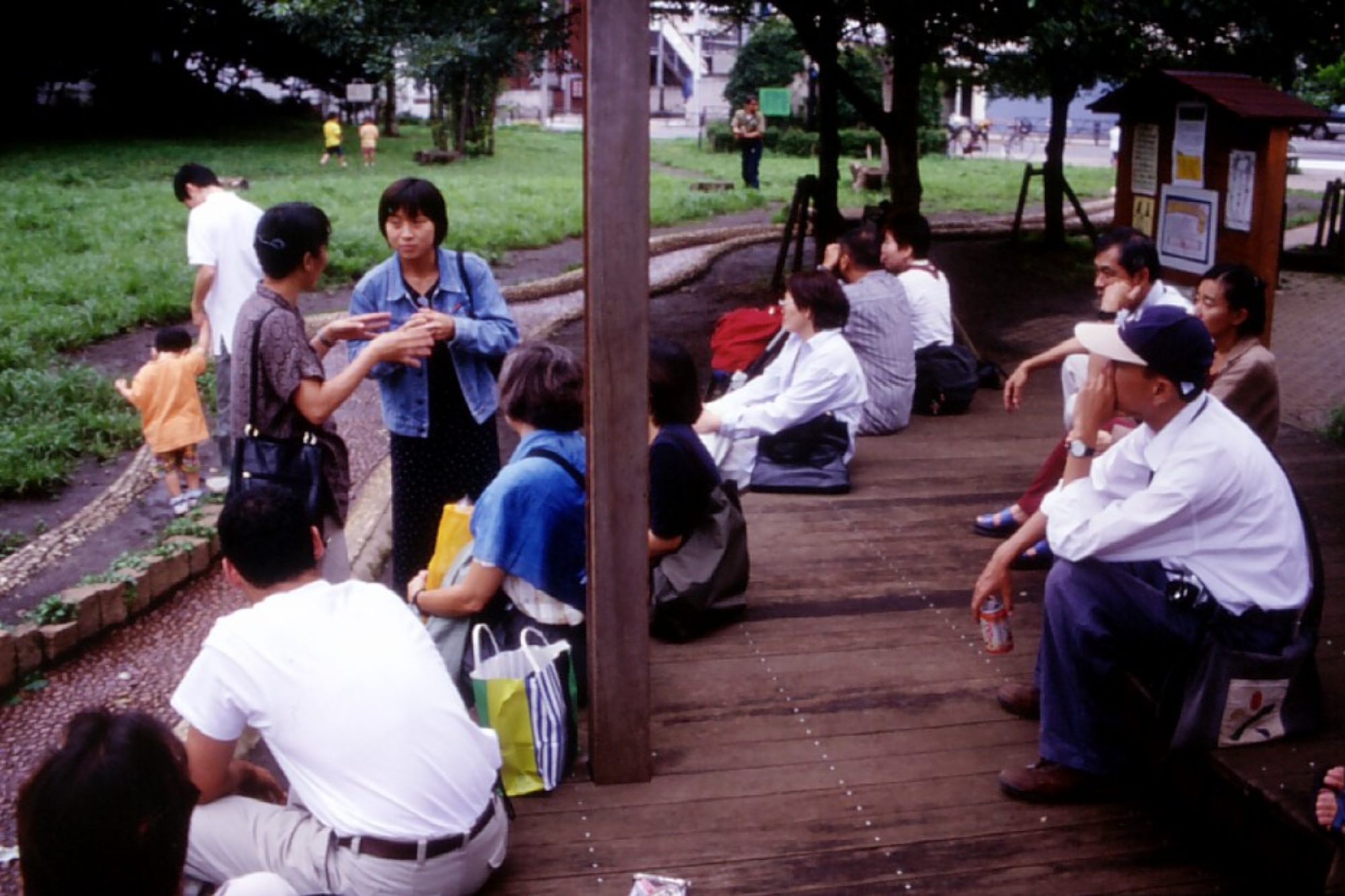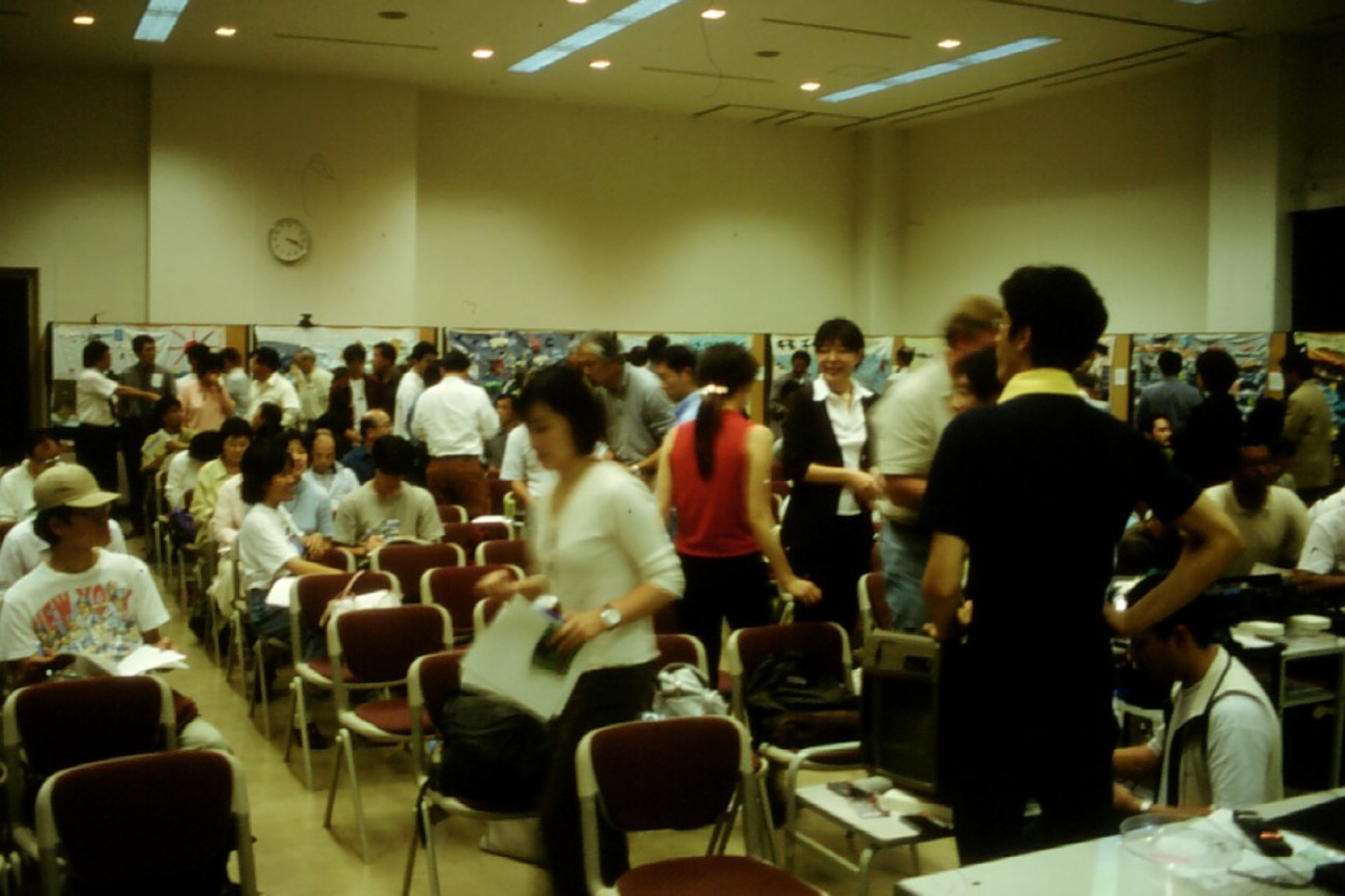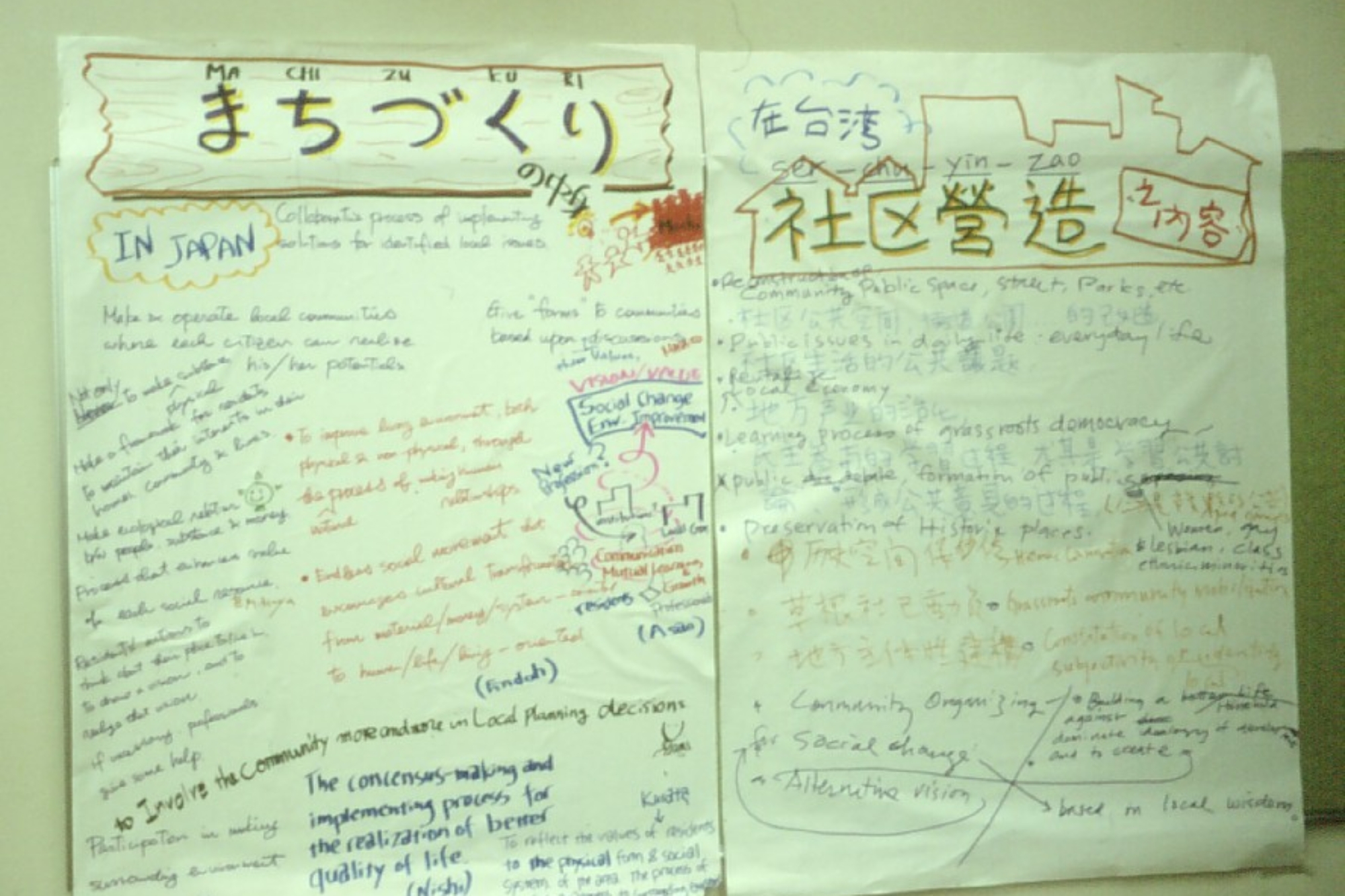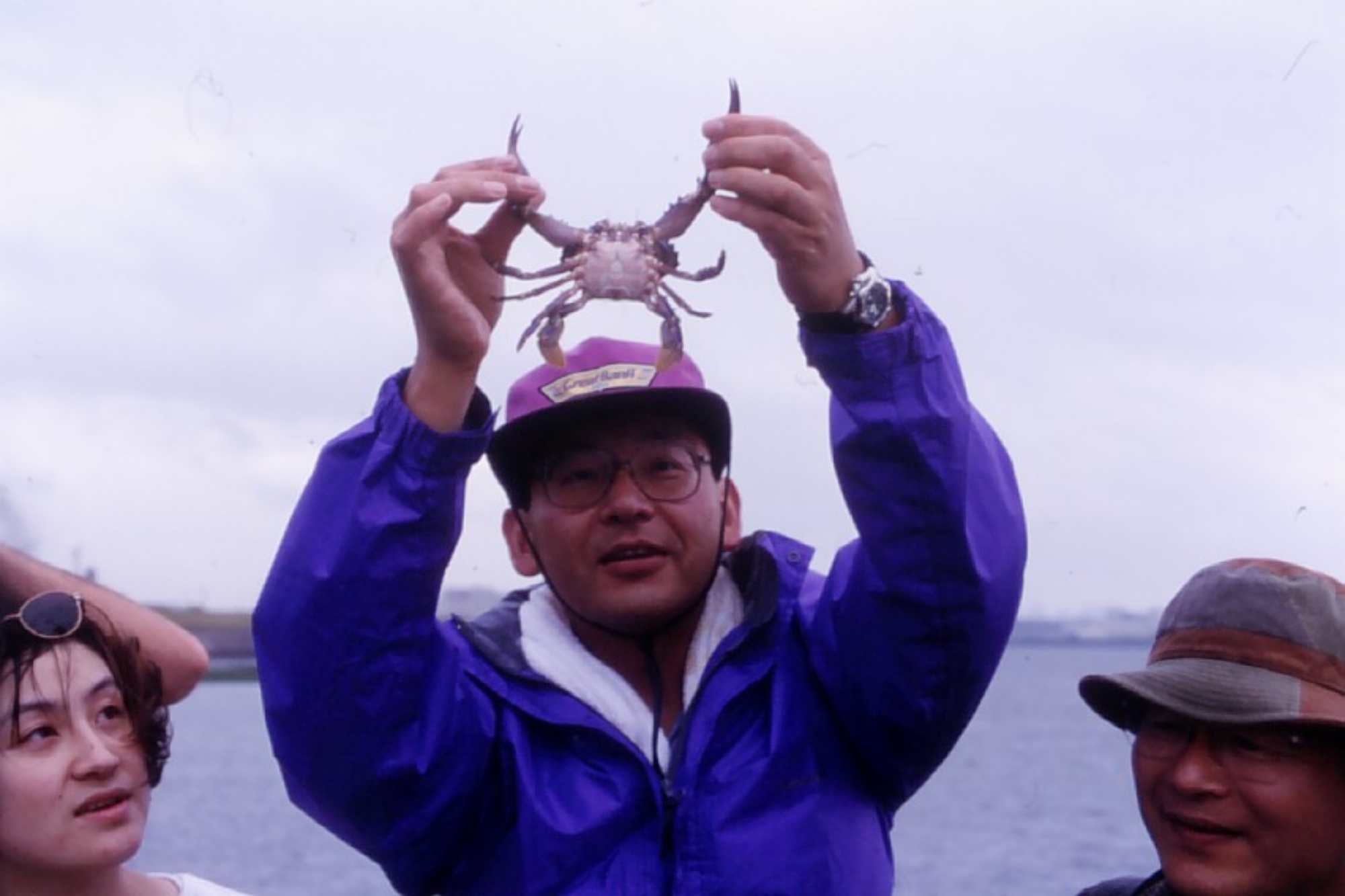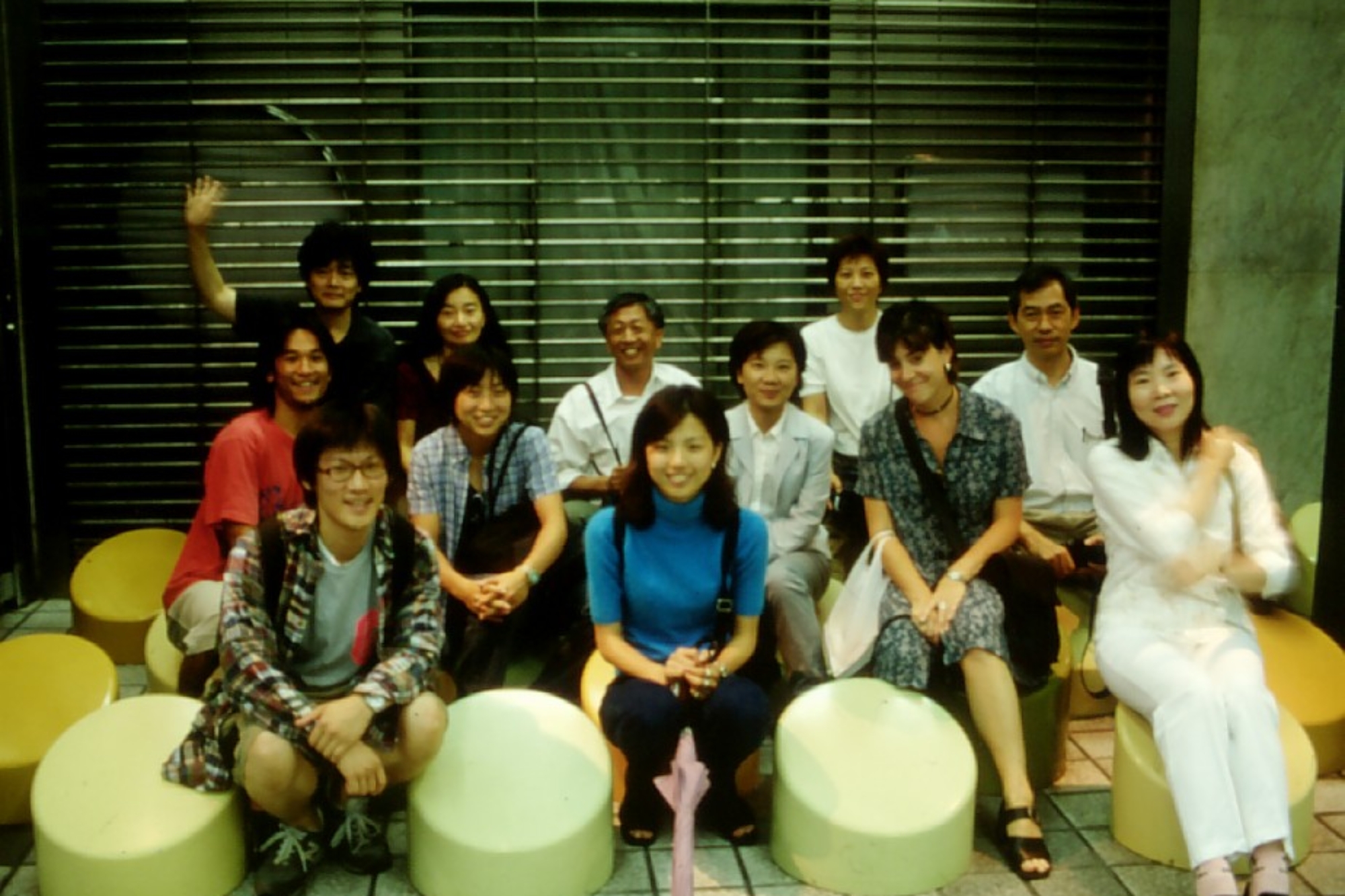Democratic Design in the Pacific Rim
The 2nd Conference of the Pacific Rim Community Design Network
Saitama, Japan. June 1999
The network participants joined each other for the second time in Saitama, Japan in 1999. Altogether, 24 papers were presented, including 9 from the USA, 6 from Taiwan, 8 from Japan, and 1 from Hong Kong, all of which shared important, findings, experiences, challenges, and struggles of community designers. In the final wrap-up session of the conference, ten key themes were identified as fundamental and common issues facing community design practices: form creates or follows culture? Native wisdom or imposing values? Vision and participatory process; social context; design methods and skills; institutionalization of NPOs and paper politics; politics and democracy; and citizen autonomy. In the practice and process of community design, there are struggles, conflicts, and challenging situations among stakeholders including local people, government officials, and community designers themselves. Sometimes, the power politics, apathy, and antipathy of stakeholders can be exhausting, but we can be revitalized and encouraged by the experiences of community designers elsewhere.
Organizer: Yoshiharu Asanoumi, Setagaya Machizukuri Center, with support from Dohi Lab
Conference Program
Session 1. Social Context and Participation
Participation and Representation in Environmental Decision-Making in the Pacific Rim Reflection on Negotiation‑Based Models of Practice – Scott McCreary
Community Participation Empowering Society: The Experience of Taiwan in the 1990s – Shu‑cheng Tseng
Designing the Everyday Life Environment for the Aging Community: An Attempt to Initiate Participation Design in Hong Kong – Jackie Kwok and Michael Siu
Community Design in the Japanese Social and Spatial Context – Masato Dohi
Public Participation in Planning in Japan with Special Regard to Urban Conservation – Yukio Nishimura
Session 2. Participation and Community Development
Who Changes Community Change? – Randy Hester
Participatory Design Process and Community Politics: The Case of Chi‑Shan Community in Taipei – Hsin‑Jong Liu & Li‑ling Huang
The Progress and Participatory Community Development and the Construction of New Social Scheme in Japan – Yasuyoshi Hayashi
Session 3. Education
Habits of the Proactive Practitioner – Mark Francis
Learning from Children: an Experiment in Environmental Education – Chao‑ching Yu
Education of Machizukuri (Community Design) in Japan – Isami Kinoshita
Session 4. Participation and Environmental Design
Urban Creeks and Community‑Building: Four Case Studies in the San Francisco East Bay – Corrina Kweskin
Instances of Community Creativity: Issues in Participation and Design – John K.C. Liu
Participatory Design that Materializes the Quality of the Exchange between Human Beings and the Environment Case Study: U‑court, a Cooperative Housing – Yasuhiro Endoh
Chance Changes “Quality” – Sawako Ono
Session 5. Professional Practice and Specialty
Participation by Itself Doesn’t Get You Anything: A Perspective from a Community Development Corporation – Michael Rios
A “Big Table” Experiment: A Case Study of the NTU Building and Planning Research Foundation – Shenglin Chang & John K-C. Liu
The Spin‑off Practice: Experiences of Secondary Processes of Planning and Activism at Ilan Studio and Taiwan Environment Action Network (TEAN) – Jeff Hou
Consensus Building is not Good Enough – Yoshiharu Asanoumi
Community Design and the Process toward a Provisional Solution to Conflict Involving the Homeless People of Nisinari Park in Osaka, Japan – Tamesuke Nagahashi
On Architect the Player – Yasuhiro Endoh
Session 6. Participation and Local Autonomy
Local Autonomy and Paying Tithe to the Region: the Menlo Park Experience – Marcia McNally
Participation and Local Autonomy – Robert Ogilvie
Participatory Urban Design Programs in Setagaya City from 1982 to 1999 – Morio Uzuki & Naomichi Kurata
Session 7. System to Sustain Professional Activity
Urban Garden Programs Past and Present: Community Development Model or Minefield? – Laura Lawson
How can Participatory Design be Incorporated in Professional Practice? – Keiko Ono & Tetsuya Ando
Chiba Field Trip & Symposium Sanbanze Action Voluntary Echo: Tidal Flat & Sustainable Development Tidal Flat Management Policy in the U.S. – Scott McCreary
Protection of Black Spoon Bill and Citizen Participation – Jeff Hou
Grass‑root Citizen Action Foster Environment and People – Marcia McNally
Tidal Flat Environmental Management to Maintain and Uplift Lives – Masahiko Isobe
Environmental Education and Sanbanze for Next Generation Thinking the Future of Sanbanz – Miwako Suzuki
Setagaya Public Symposium Environmental Design and Civil Society: Toward 2lst Century
Keynote Speeches: Contemporary Issues of Citizen Participation – Randy Hester, John K-C. Liu, Yasuyoshi Hayashi
Project Examples Sustainable Community and NPO (Urban Ecology project) – Marcia McNally
Urban Recreation and Advocacy (Project done by OURs) -Hsin‑Jong Liu
Environmental Conservation and International Network (SAVE case) -Jeff Hou
Panel Discussion: Toward Fruitful Participation and 21st Century – Randy Hester, Robert Ogilvie, Chu‑joe Hsia, Hsin‑Jong Liu, Yasuyoshi Hayashi, Yasuhiro Endoh, Yukio Nishimura
